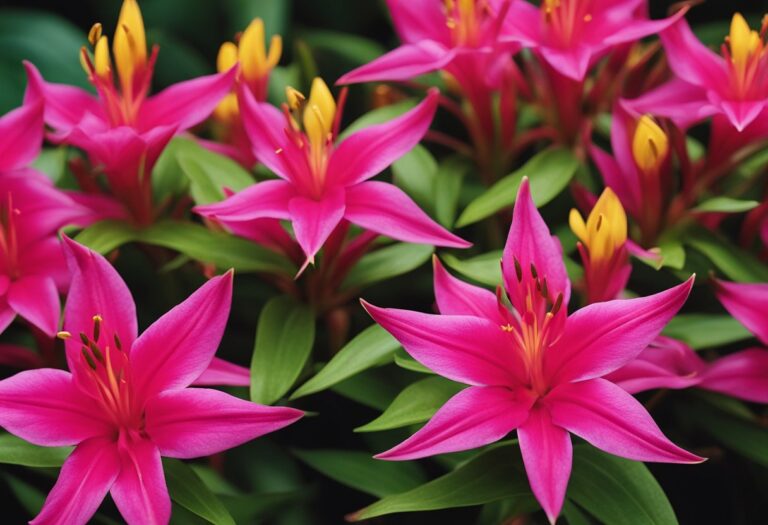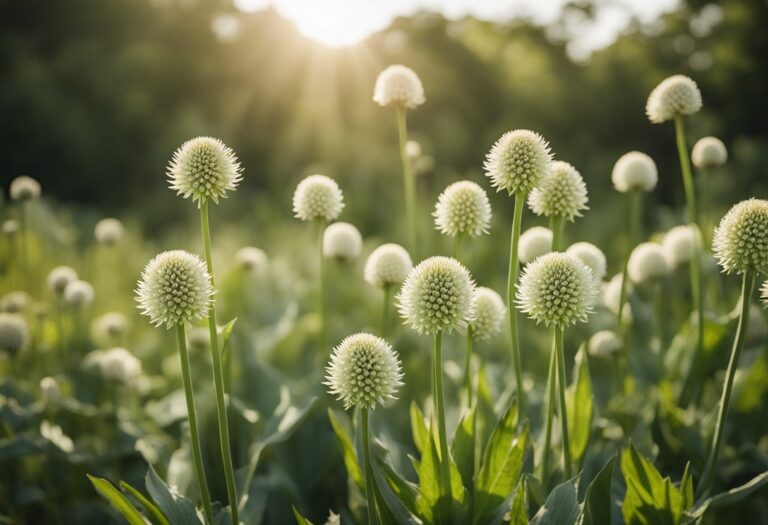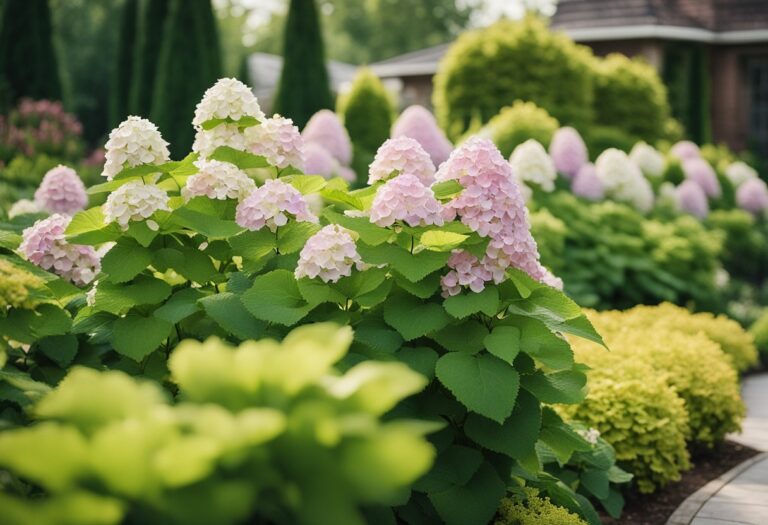Overview of ‘Etoile de Lyon’
The ‘Etoile de Lyon’, meaning Star of Lyon, is a historic and robust rose, renowned for its vigor and extended blooming period. Your garden can be graced by this resilient plant from early spring through to winter.
Characteristics of ‘Etoile de Lyon’:
- Color: You’ll see a captivating light yellow, which sometimes has a darker center and evolves into a deeper yellow as the flower ages.
- Fragrance: It exudes a moderate tea fragrance, imparting a refreshing scent to your surroundings.
- Bloom Shape: The blooms are globular and very double, tending to be mostly solitary or in small clusters with scalloped petals.
- Health: Noteworthy for its vigorous and healthy growth habit.
When caring for ‘Etoile de Lyon’, remember:
- Sunlight: It prospers in full sun, enabling the best growth and flowering potential.
- Pruning: Regular pruning is beneficial to manage its shape and encourage new blooms.
- Watering: It demands consistent watering but ensure proper drainage to prevent root diseases.
This rose was introduced in the 19th century and continues to be a favorite among enthusiasts for its striking color and reliable performance. Once the buds open, the inner saffron yellow petals more than compensate for some petal flaws in the outer layers. Whether in the ground or a container, ‘Etoile de Lyon’ promises to be a showstopper in your garden.
Cultivation and Care
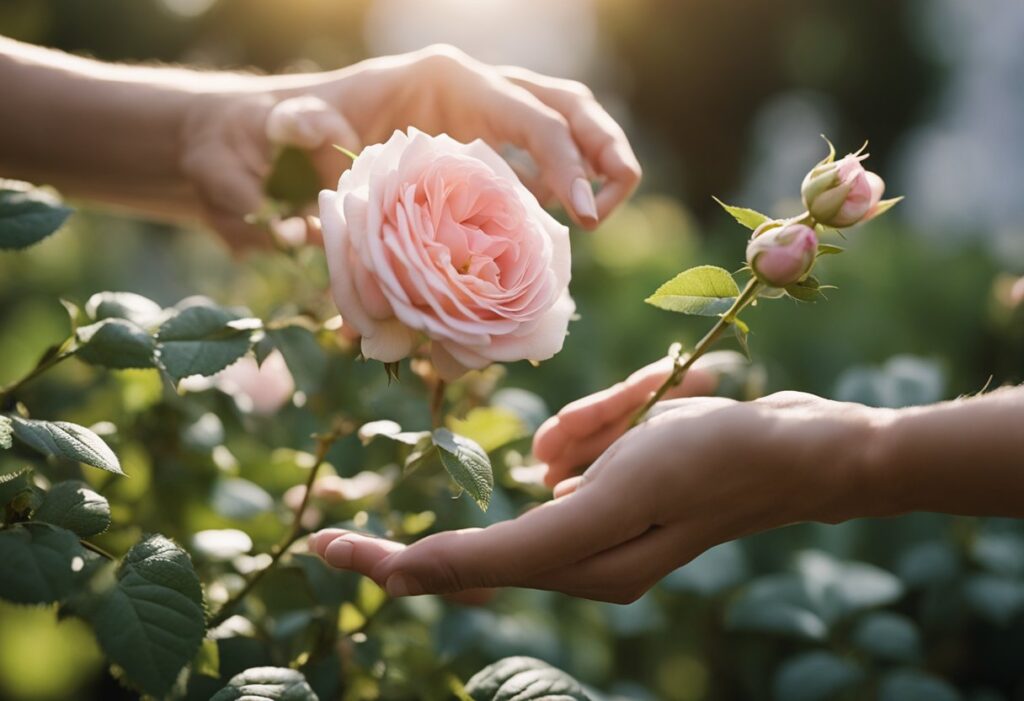
To ensure that your ‘Etoile de Lyon’ rose thrives, attention to planting location, consistent watering, feeding, pruning practices, and pest and disease management is crucial.
Planting
Choose a location that receives at least six hours of sunlight daily for your ‘Etoile de Lyon’ rose. Ensure the planting site has well-drained soil, rich in organic matter. Plant in spring or fall, spacing roses about three feet apart to allow for mature growth and air circulation.
Watering and Feeding
- Watering: Your rose will need an inch of water weekly, whether from rainfall or watering. Avoid overhead watering to keep the foliage dry and reduce disease risk.
- Feeding: Fertilize with a balanced rose food after the first bloom. Continue feeding every four to six weeks or as per the fertilizer’s instructions until late summer.
Pruning
- Prune in early spring when new growth appears. Remove dead or damaged wood, and cut back one-third of the older canes to encourage new growth.
- Deadheading: Regularly remove spent flowers to encourage repeat blooming throughout the growing season.
Pest and Disease Management
Regularly inspect your ‘Etoile de Lyon’ rose for signs of pests like aphids and diseases such as black spot. Treat infestations promptly with appropriate insecticides or fungicides, following product guidelines carefully to avoid harming the plant.
Propagation
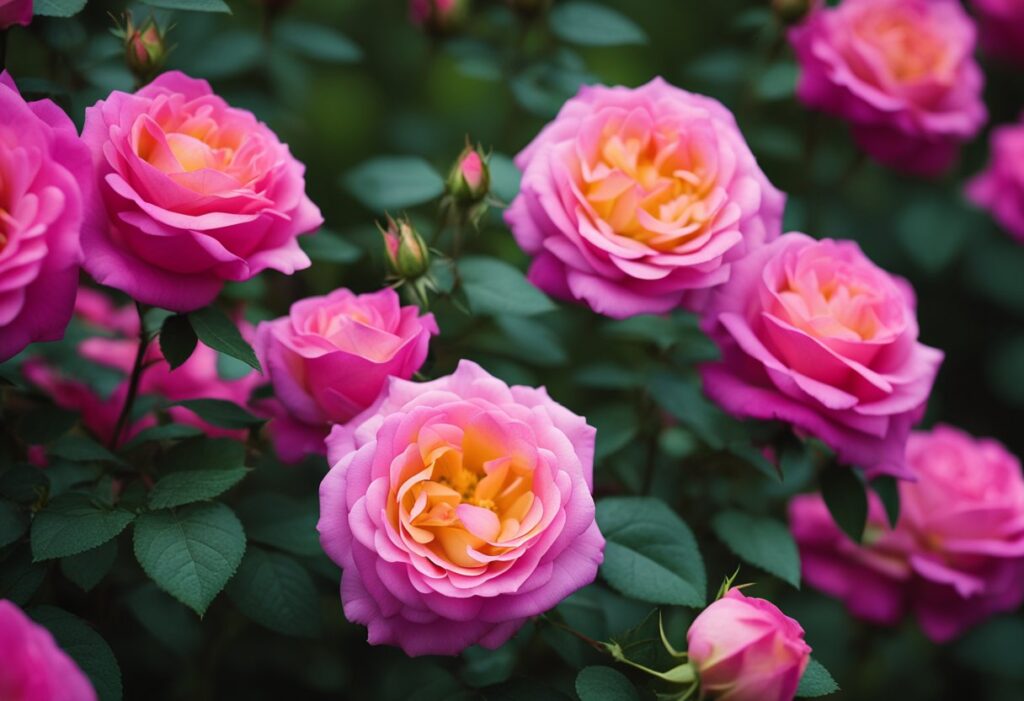
Propagating the ‘Etoile de Lyon’ rose is an effective way to multiply this beautiful plant. The two primary methods you can use are cuttings and layering.
Cuttings
To propagate ‘Etoile de Lyon’ from cuttings:
- Select a healthy, disease-free stem.
- Cut a 6-8 inch piece from the stem at a 45-degree angle below a leaf node.
- Remove leaves from the lower two-thirds of the cutting.
- Dip the cut end in a rooting hormone powder to encourage root development.
- Plant the cutting in a pot filled with a mix of peat and perlite.
- Keep the soil moist and the environment humid (a plastic bag can help).
- The cutting should root in 4 to 8 weeks, after which it can be transplanted.
Layering
To propagate ‘Etoile de Lyon’ by layering:
- In the spring, choose a healthy, flexible stem.
- Gently bend it to the ground and make a small slit or wound on the underside of the stem where it touches the soil.
- Secure this part of the stem in place with a U-shaped pin or a heavy stone.
- Cover the wounded section with soil while leaving the end of the stem exposed.
- Water the area to keep it moist.
- Roots will form at the wounded section, and you can sever the new plant from the parent once it’s established, which usually takes a season.
Historical Significance
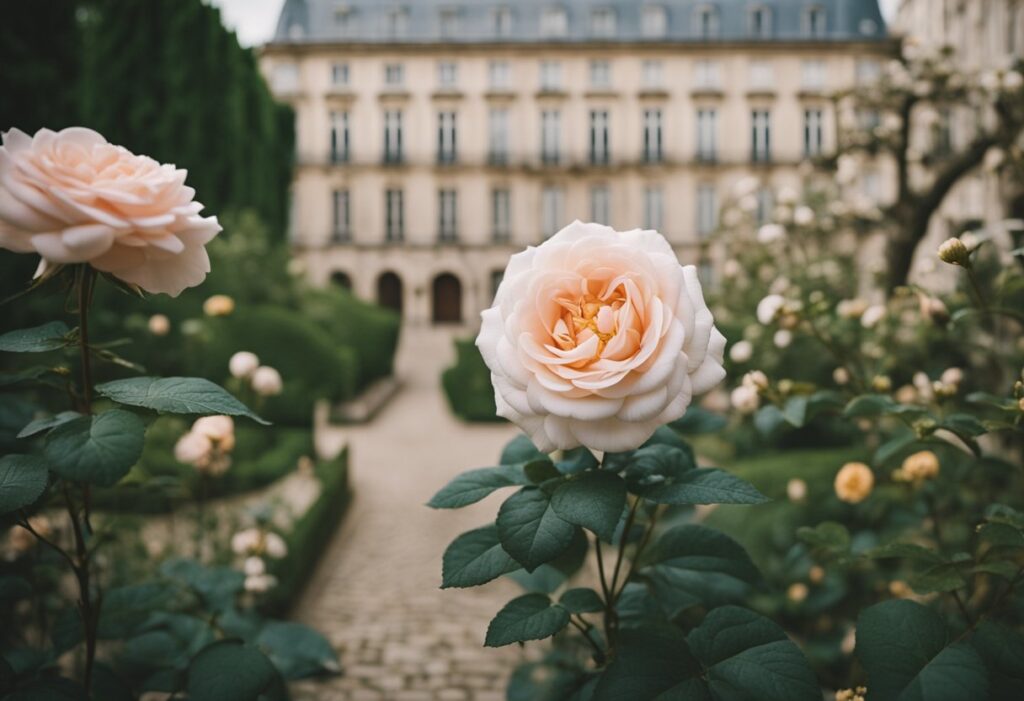
Your appreciation for the ‘Étoile de Lyon’ rose is enhanced by understanding its history. Bred by Jean-Baptiste André Guillot, a renowned French rose cultivator, this variety emerged in 1876. It stands out for its enduring presence and remarkable resilience, which reflects in its repeated blooming from spring through winter.
In your garden, ‘Étoile de Lyon’ is more than merely a plant—it’s a living piece of heritage. Introduced in Australia in 1889 by J. Scott & Son, it became synonymous with the era’s quest for robust and vibrant roses.
- Origin: France
- Breeder: Jean-Baptiste André Guillot
- Year: 1876
- Introduction in Australia: 1889, by J. Scott & Son
Consider its light yellow blossoms that transition to a deep yellow as they age, a testament to the cultural significance it has held over time. The fragrance – a moderate tea aroma – is a sensory link to the gardens of decades past.
When you care for an ‘Étoile de Lyon’, you’re nurturing a piece of horticultural history with ties to ancient cultivation practices, especially from regions such as China, Egypt, Rome, and Greece. It’s essential to remember your rose’s legacy, shaped by centuries of admiration and selection to bring beauty and fragrance to gardens around the world.
Varietal Characteristics
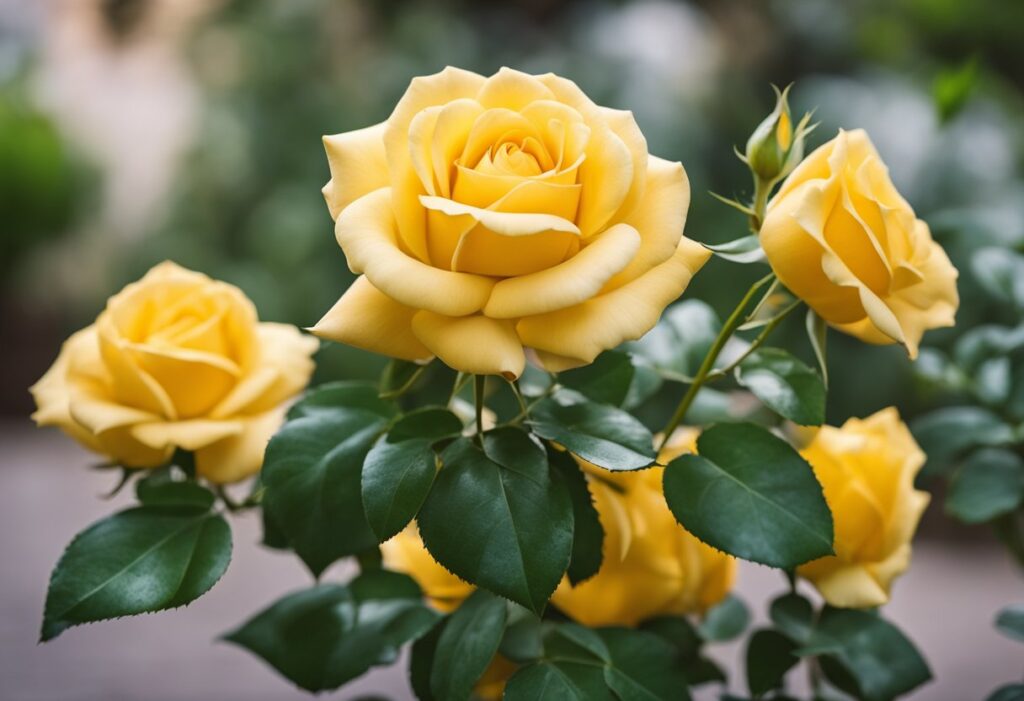
Your ‘Etoile de Lyon’ rose is widely admired for its historical significance and robust blooming habit. Originating in France and introduced in 1889, this Tea class rose is a durable choice for your garden.
Bloom Characteristics:
- Color: The ‘Etoile de Lyon’ starts with light yellow blooms, featuring a darker center that ages to deep yellow.
- Shape: Blooms are high-centered when they first open, but become globular and full as they mature.
- Petal Count: You will find a full count of 26-40 petals contributing to the lush appearance of the flowers.
- Fragrance: Possessing a moderate tea fragrance, it provides an additional sensory benefit beyond its visual appeal.
Growth Habits:
- Bloom Size: The blooms are large, measuring 4-5 inches in diameter.
- Flowering: This rose is a hard worker, producing flowers from early spring through to winter.
- Health: It’s considered very healthy, which means you’ll have fewer issues with disease.
Cultivation Details:
- Height: The plant reaches heights of 4-5 feet, so plan your space accordingly.
- Rebloom Quality: It has a remarkable rebloom rate, ensuring a continuous display.
- Hardiness Zones: Suitable for USDA zones 6-9, it has good adaptability to various climates.
The ‘Etoile de Lyon’ may occasionally have outer petals that appear less vibrant, but once the buds open, the inner saffron yellow petals overshadow any imperfections. Keep in mind that due to the weight of the blooms, they may droop, adding a charming grace to your garden landscape.
Frequently Asked Questions

The ‘Étoile de Lyon’ rose is renowned for its vibrant yellow blossoms and strong tea fragrance. Understanding its care requirements is key to maintaining its beauty throughout the year.
How do I care for an ‘Etoile de Lyon’ rose?
Your ‘Étoile de Lyon’ will thrive with routine care, including annual fertilization and consistent monitoring for pests. Provide a balanced rose fertilizer to ensure your plant receives all the necessary nutrients.
What are the best growing conditions for ‘Etoile de Lyon’ roses?
Plant your ‘Étoile de Lyon’ rose in well-drained soil with full sun exposure. This rose variety prefers a location that receives at least six hours of sunlight a day to maximize bloom production.
Are there common problems or diseases associated with ‘Etoile de Lyon’ roses?
While ‘Étoile de Lyon’ roses are considered healthy, they can encounter issues common to roses, such as black spot and aphids. Prompt treatment with appropriate fungicides or pest control methods is recommended when these problems arise.
How often should ‘Etoile de Lyon’ roses be watered?
Water your ‘Étoile de Lyon’ roses deeply once a week, allowing the soil to dry between waterings. Avoid overhead watering to reduce the risk of leaf diseases.
What pruning techniques are most effective for ‘Etoile de Lyon’ roses?
Prune your ‘Étoile de Lyon’ roses in early spring, removing dead or diseased wood and opening the center of the plant to improve air circulation. Pruning just above outward-facing buds encourages outward growth and ample blooms.
Can ‘Etoile de Lyon’ roses thrive in colder climates?
‘Étoile de Lyon’ roses can withstand cooler climates. However, in areas with harsh conditions, they benefit from winter protection. Mulching and using rose cones can provide additional insulation against cold temperatures.







